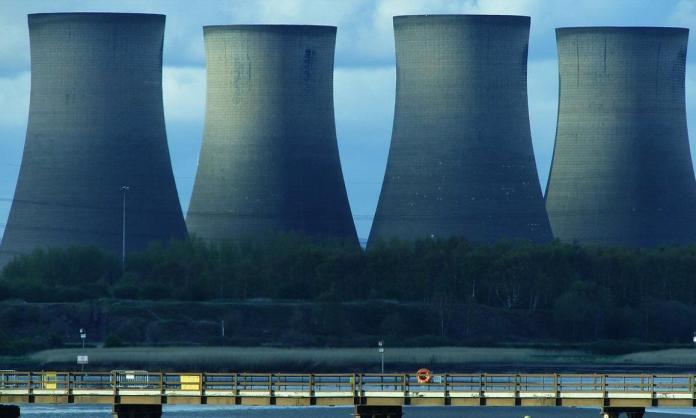Cooling Tower Overview:
A cooling tower is a heat exchanger that removes waste heat from a power plant, industrial process, or HVAC system and transfers it into the atmosphere. The transfer of heat occurs by evaporation of water within the cooling tower. As the water evaporates, it absorbs sensible heat from the warm water being circulated through the tower. The cooled water is then recirculated back to the power plant or industrial process to be cooled again.
The global cooling towers market is estimated to reach US$ 3,557 million by 2021. This market growth rate of 5.3% between 2022-2032.
Cooling towers come in a variety of shapes and sizes, but all use the same basic operating principle: they transfer heat from hot water to air using evaporation. Heat is removed from the circulating water by evaporating a small portion of it inside the cooling tower. The remaining water is cooled and returned to its respective system. Because no energy source is required to drive this type of cooling process, it is very efficient.
Facts About Cooling Towers You Didn’t Know
1. Cooling towers are not used to cool buildings or other structures. Instead, they are used to cool water that is used in industrial processes or for power generation.
2. The vast majority of cooling towers are located in the United States, with more than 50,000 in operation.
3. Cooling towers come in a variety of shapes and sizes, but all operate on the same basic principle. Warm water is pumped to the top of the tower and then sprayed over a series of fins or other heat-exchange surfaces.
Over the forecast period 2022-2032, the market is expected to grow due to the growing need for energy-efficient cooling systems in industrial and commercial applications. Cooling towers are a cost-effective way to cool large commercial spaces or process cooling applications across a variety of industries and verticals. Thermoelectric power plants also use cooling towers to remove excess heat. The increasing electricity consumption is driving the construction of new power stations, which will fuel market growth.
The market suffered greatly from the COVID-19 pandemic, which caused severe disruptions in supply chains and temporarily suspended production in many industries and verticals. Many industries that depend on cooling towers and their end-use industries had to face declines after the pandemic. The production of chemicals fell by 3.6% in 2020, while oil and gas production declined by 6.4%. In 2020, revenue fell in the HVAC and power generation industries. This affected the adoption of cooling towers. The market is expected to recover slowly in 2020.
Cooling towers will be moderately resisted due to environmental concerns. The plume and drift that cooling towers produce are often blamed. These concerns can be overcome by the use of plume-abated towers and drift eliminators. Plumme abated towers, which are designed to remove water from vapor and recirculate it, consume large amounts of water. Plumme-abated towers can help conserve water and reduce operational costs. The market’s growth is boded well by the increasing preference for plume-abated towers.
Cooling Towers Market Trends
The growing demand for cooling towers can be attributed to increasing industrial and commercial activity around the world. The rising popularity of data centers and their increasing construction are expected to increase the need for cooling towers. For IT equipment to work effectively, it needs optimal temperatures. These cooling towers are available at data center facilities to remove heat from the equipment.
Many industrial sectors have been severely affected by the COVID-19 outbreak. Cooling towers are used mainly in petroleum refineries, thermoelectric power plants, and commercial and industrial HVAC. They also have a place of application in heavy industries. These verticals all require production to be carried out. Due to the global pandemic, restrictions placed by governments worldwide meant that on-field activities were hampered. Decreased demand in these verticals, has hurt the cooling towers market overall. The market will recover slowly and reach pre-pandemic levels of growth as soon as the restrictions are lifted.
Cooling towers offer energy savings, but scaling and corrosion are still major problems. They increase energy consumption and thus maintenance costs. Water treatment is still vital but the cooling tower operator must monitor the water treatment process.
The benefits of cooling towers
A cooling tower is a heat rejection device that removes waste heat from a power plant or other large industrial facility. The hot water is cooled by contact with air, and the cooled water is then returned to the facility to be used again.
Cooling towers are a vital part of many industrial facilities, as they help to remove waste heat and keep the facility cool. There are many benefits to using cooling towers, including:
-Reduced energy costs: By removing waste heat, cooling towers can help reduce the overall energy consumption of a power plant or industrial facility.
-Improved process efficiency: By keeping the facility cool, cooling towers can improve the efficiency of many processes.
-Extended equipment life: By removing excess heat, cooling towers can help extend the life of equipment and machinery.
10 things you did not know about the maintenance of cooling towers
Cooling towers are essential components in various industrial processes, helping dissipate excess heat into the atmosphere. Here are ten lesser-known aspects of cooling tower maintenance:
- Microbial Growth Prevention:
- Insight: Cooling towers are susceptible to microbial growth like algae and bacteria. Regular cleaning and water treatment are necessary to prevent the formation of biofilms and maintain efficient heat transfer.
- Lurking Legionella Bacteria:
- Insight: Cooling towers can be a breeding ground for Legionella bacteria, which can cause Legionnaires’ disease. Implementing a water treatment program and regular disinfection are crucial for controlling the growth of these harmful bacteria.
- Scale and Corrosion Management:
- Insight: Accumulation of scale (mineral deposits) and corrosion can reduce the efficiency of a cooling tower. Proper water treatment helps prevent scale formation and corrosion, preserving the tower’s performance.
- Vibration Monitoring:
- Insight: Regularly monitor vibrations in fans, motors, and other moving parts. Unusual vibrations can be an early indicator of mechanical issues that may lead to equipment failure if not addressed promptly.
- Winterization Practices:
- Insight: In cold climates, cooling towers need proper winterization to prevent freezing. Draining the water, insulating components, and using freeze protection methods are essential to avoid damage during winter months.
- Fan Blade Cleaning:
- Insight: Dirty fan blades can reduce airflow, impacting the cooling efficiency. Regularly inspect and clean fan blades to maintain optimal performance.
- Variable Frequency Drives (VFDs):
- Insight: Implementing VFDs on fans can enhance energy efficiency by adjusting the speed based on the cooling load. Regularly check and maintain VFDs to ensure they operate optimally.
- Water Treatment Program:
- Insight: Develop and follow a comprehensive water treatment program to prevent scale, corrosion, and biological growth. Regular water quality testing is crucial to assess the effectiveness of the treatment.
- Drift Eliminators Maintenance:
- Insight: Drift eliminators prevent water droplets from being carried into the air exhaust. Regularly inspect and clean drift eliminators to maintain their effectiveness and prevent potential issues like air pollution.
- Legionella Testing:
- Insight: Periodically test for Legionella bacteria in the cooling tower water. Early detection allows for swift action to control bacterial growth and prevent health risks associated with Legionnaires’ disease.
Maintenance of cooling towers is essential for their efficiency, longevity, and the safety of personnel. Regular inspections, proactive cleaning, and adherence to a comprehensive maintenance program contribute to the reliable and safe operation of cooling tower systems.
You may also want to read,








